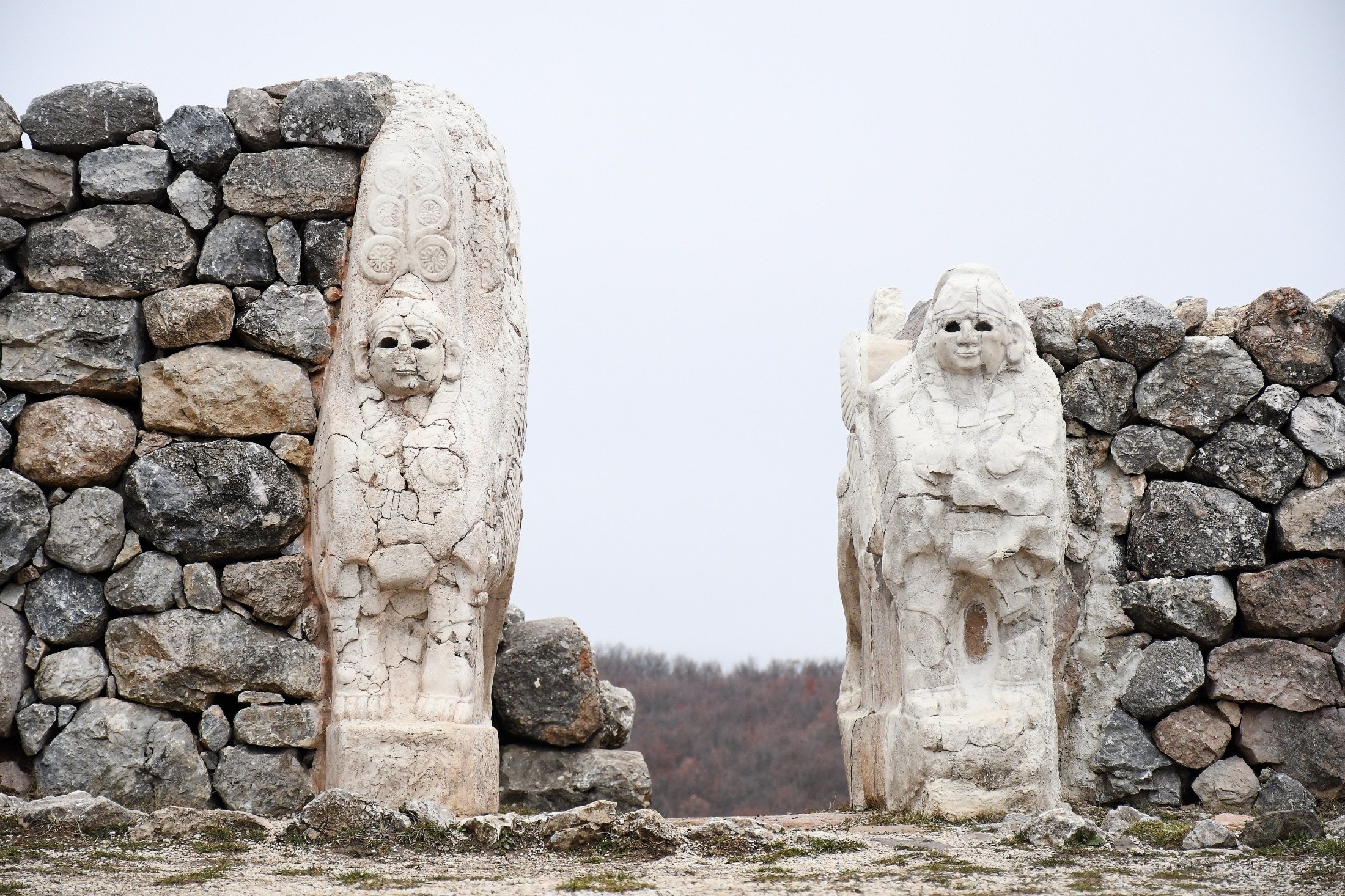© Turkuvaz Haberleşme ve Yayıncılık 2026
Konya's 9,000-year-old Çatalhöyük, Çorum's Hittite ruins and its cultural and artistic center Alacahöyük, Anatolia's first executive military center, and Kayseri's Kültepe, home to thousands of clay tablets, are ancient sites included in Turkey's vast heritage, shedding light on thousands of years of Anatolian and Mesopotamian history.
The ancient Çatalhöyük site – located in the Çumra district of central Turkey's Konya – is one of the first urbanization models in Mesopotamia's history. It is on the UNESCO World Heritage List, and it is one of the clearest windows into the 9,000-year-old Anatolian lifestyle.
Archaeologist Numan Arslan, from the Çatalhöyük excavation project team, explained that the site was discovered in 1958, with the first excavations starting in 1961, and that the site was dated to the Neolithic period 9,000 years ago.
"Çatalhöyük has offered very intriguing data to the world of archeology. The art, symbolism, their complex societal structure, these kinds of settlements were known to exist in the Near East but not in Central Anatolia," Arslan told Anadolu Agency (AA).

Arslan then stated that the transition from hunting and gathering to the first urban model occurred in Çatalhöyük. "We now live in metropolises. We have to follow the urban culture given by those crowded metropolises, but the people of Çatalhöyük first tried out an urban city culture here, 9,000 years ago,” he said.
Arslan also noted their societal system. “There was a completely egalitarian social structure. There were no public spaces, no common meeting areas. Lots of houses. It shows us the importance of working together and supporting each other."
Çorum is home to many Anatolia “firsts” thanks to its vast ancient history with its ruins of Hattusas, which served as the capital of the Hittite civilization for 450 years, and Alacahöyük, which was the cultural and artistic center of the Hittites and the first administrative-military center in Anatolia, all located within the borders of the northern Anatolian province.
The ancient city of Hattusas, located in the district of Boğazkale and host to the cultural heritage of the Hittites, is the only ancient city in the world to be considered both a UNESCO World Heritage List site and also a part of the Memory of the World Program.

Hattusas is also home to the first known written treaty in history in the form of a cease-fire agreement between the Hittites and Egyptians, called the Kadesh Peace Treaty.
The city is the source of many historical artifacts obtained in the archaeological excavations that have been going on for more than a century in the region, with most being exhibited in the Boğazkale Museum.
The Hittite Sphinx, a special kind of statue belonging to the royal family dating back to 1,300 B.C., could be considered the crowning jewel of the museum's exhibitions.
The limestone sphinx – 258 centimeters (101.5 inches) long, 175 centimeters wide and about 1,700 kilograms (3,747 pounds) in weight – greets its visitors at the entrance of the Boğazkale Museum.
The Ministry of Culture and Tourism brought it back to its homeland in 2011 after 94 years from Germany, where it was taken to be restored in 1917.
Finally, there is Kültepe – also known as Kanesh – which helped unearth history from a different angle with its thousands of clay tablets enlightening the trade and culture in Anatolia, a mere 4,000 years ago.
The first scientific excavations at the site began in 1948 under the leadership of Tahsin Özgüç. They have been ongoing for 73 years about 25 kilometers (15 miles) from the city center of central Turkey's Kayseri.

The cuneiform clay tablets unearthed in Kültepe – and exhibited in Ankara, Kayseri and Istanbul – present a history of Assyrian merchants traveling from around Mosul to Anatolia and accepting Kayseri as their capital, thus introducing the Anatolian people to trade and writing 4,000 years ago.
"The Assyrian merchants made trade in the region stretching from Eskişehir to Kütahya, from the lakes region to Samsun," Ankara University's Fikri Kulakoğlu said. He emphasized that the center established in Kayseri played an important role in opening Anatolia to the world.
"The Assyrians paid a part of the profits they earned from their trade here as a tax and ensured the development of local cities. The Assyrians enabled the Anatolian people to meet the global world of those times. At the end of this period, the Hittite Kingdom, which was the first state of Anatolia, was established," Kulakoğlu noted.
